Meet Argo, our cost-effective space cargo capsule. Optimized for flexibility and reliability, Argo offers an end-to-end service at a low price point of just €150M. Led by RFA, the bidding consortium combines our expertise with that from Space Cargo Unlimited, along with partners like ATMOS Space Cargo to offer a fully reusable solution for the European Space Agency and commercial clients.
Instead of giving you a formal press release, we decided the best way to talk about Argo would be to talk directly with YOU. So, we asked you to submit any pressing questions you had about Argo and promised to answer some of them in a future post.

However, you came up with such great questions that we decided we couldn’t choose just some to answer. So we’re giving you answers to every single one! Before we dive into your questions, let’s first take a look at why Argo, as a concept, exists in the first place.
While Europe’s space capabilities are still world class, it is no longer the space power it once was due to the lack of autonomy.
But with a booming New Space industry and innovative initiatives, the doors are open to achieve the European Space Agency’s ambition to position Europe as a global space power once again by 2035. One such initiative is the competition opened by ESA in November 2023 for a European cargo service to and from space stations in Low Earth Orbit. Since the termination of ESA’s Automated Transfer Vehicle (ATV), we have had to rely on international sources for our space cargo needs. The recent call from ESA shows their commitment to developing Europe’s future as a global space leader once more.
Argo is our answer to this call. But it’s also more than that. Argo is not “just” a supply service for space stations. It stands as a symbol of Europe’s leadership and innovation in the New Space economy.

As much fun as it would be to send a Brazilian-built Fiat to space, that’s not quite what we had in mind when we came up with the name for our cost-effective cargo capsule.
The meaning behind the name Argo is two-fold. The main reason is simple: It’s Cargo, without the (C)osts. The second reason is that our pre-development team was inspired by the legendary Argo ship in Greek mythology.
Now that we’ve cleared that up, let’s get on with the rest of your questions. We’ve broken them down into categories, so please don’t stress if we don’t answer all questions shown in the screenshots in one go.
Unsurprisingly, but understandably, we got a LOT of questions about Argo’s launch vehicle.
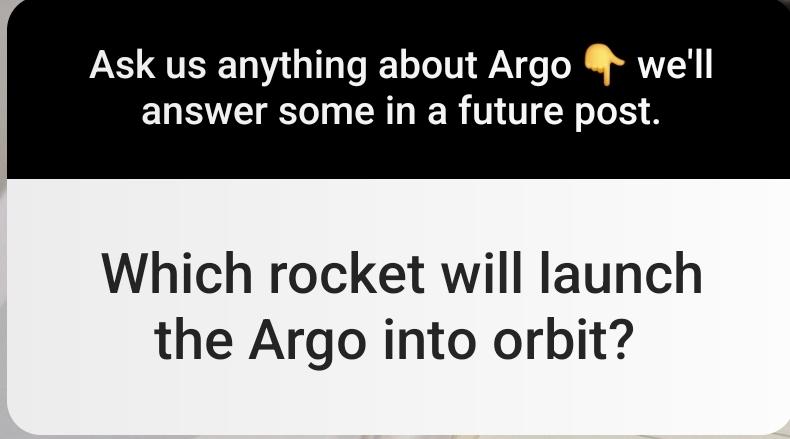



According to the requirements of ESA, Argo is developed for use on any launcher. At a minimum, it is compatible with current and future European medium to heavy-lift launch vehicles, but can also fly with other medium or heavy-lift launch vehicles if needed.
This approach makes Argo launch agnostic and capable of offering a 100% flexible and customer-oriented service.



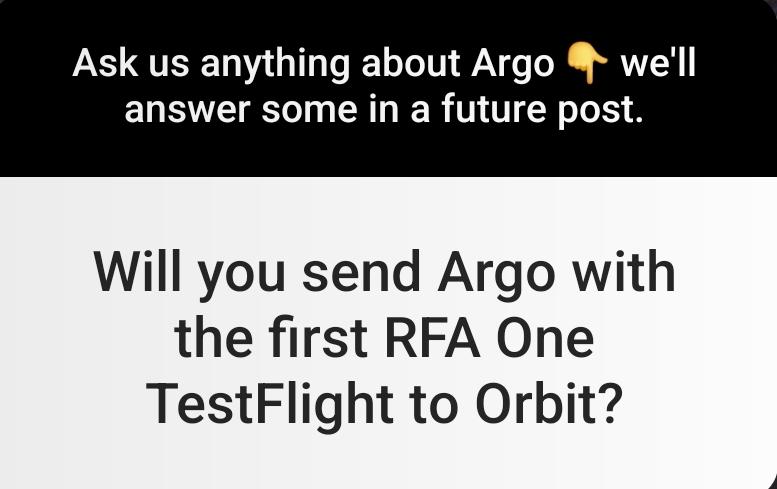
Although Argo is compatible with other existing and upcoming launchers, the most cost-effective solution would be to launch on our very own medium or heavy-lift launch system. This enables us to offer a full end-to-end cargo service for 4,000kg to and from orbit.
As one person pointed out, RFA ONE is indeed too small to carry Argo. But that was never our plan. ESA’s requirement is that we must launch Argo by 2028 – and by then the European Launcher Challenge will presumably provide the framework for the development of a larger RFA rocket. So we move step by step and start with our RFA ONE which, you’ll know, is due to launch in summer 2024 and is already fully booked for its two test flights.

Tying in nicely to the previous point, we can confirm that we plan to implement Argo’s first demo mission in 2028.
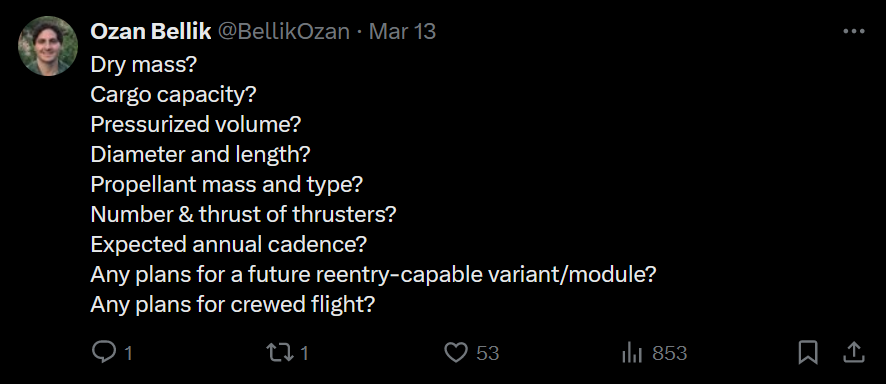
During our market research, we found a substantial global demand for cargo transportation missions. After its first demo mission in 2028, we plan to make the service commercially available from 2029 onward, with the aim to increase cadence as needed to serve the market.



Argo will be 3.7 m in diameter and 7.7 m long (without its fairing). It will have a 1:1 ratio between its up and down cargo mass – one of its most unique features. How do we achieve the same up-and-down mass? With an Inflatable Atmospheric Decelerator (IAD), provided by our partner Atmos Space Cargo.
The main structural elements of Argo can easily be scaled in a fast and cheap way. Using our building block approach, it’s possible to add segments to the existing capsule. We can also scale the propulsion system and propellant storage with minimal changes elsewhere, making Argo more flexible for future space stations in LEO. Of course, service evolution depends entirely on market demands and trends. But what we’re saying is that we will be ready!




Argo has a dry mass of 5,200 kg without cargo, a total internal pressurized volume of 27.9 cubic meters and a pressurized cargo volume of 15.5 cubic meters. It can carry up to 4,000 kg of cargo to and from orbit.

Two RFA Fenix engines will power Argo in orbit, with an additional 24x 100 N Thrusters for the Reaction Control System (RCS). The Fenix engines use bi-propellant and will already have flight heritage from RFA ONE. Argo has an estimated propellant mass of 3,082 kg.


Cube Sats are a critical part of the LEO research environment. Our RFA ONE with Redshift OTV already offers satellite deployment capabilities, but we also see potential future opportunities for adding dispensers to Argo to complement the Redshift service.
Argo will utilize its Inflatable Atmospheric Decelerator to allow the entire vehicle to return to Earth and safely land with up to 4000 kg of cargo. The position of the Inflatable Atmospheric Decelerator (IAD) was moved from the front in Version 1 to the back in the current version, but this doesn’t change the functionality or effectiveness of the return module. We can confirm that Argo is capable of safe re-entry.
Our demo mission in 2028 will last a total of 25 days. Argo will spend three of those days getting to the ISS, 20 days docked, and 2 further days for undocking, re-entry and recovery. However, Argo is designed to service our customers and their needs. Therefore, it’s possible for Argo to remain in orbit for over one year, if required.
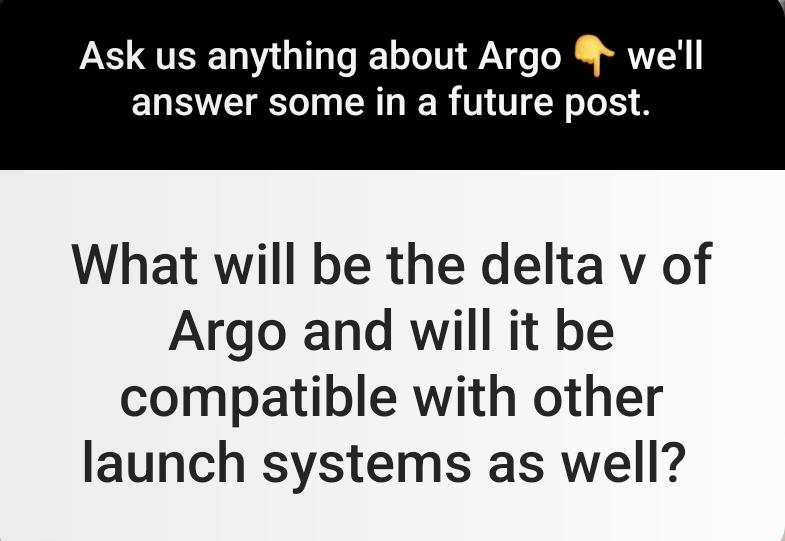
For the demo mission in 2028, we have enough delta v to reach ISS and safely re-enter – around 1,000 m/s.

Yes. As previously mentioned, the primary propulsion system uses the existing Fenix engine and 24 100 N thrusters make up the Reaction Control System.

The front of the vehicle is pressurized, with the middle section containing the service module and the rear end comprising the Inflatable Atmospheric Decelerator and Fenix engines.
For more information on the specifics of each module, you can watch our animation video.
The first question has a very simple answer: ESA requested docking. This makes Argo compatible with other planned commercial stations. So yes, Argo will be able to service other space stations in the future.
Currently, there are no plans for Argo to refuel a space station, but it can provide significant orbit-raising maneuvers.

Absolutely! Argo can be used for in-orbit experiments with or without docking to the ISS or any other space station. Specifically, Argo can induce spin to generate up to Martian gravity along the cylindrical hull of the pressure vessel.

With its current re-entry profile and decelerator (heatshield), Argo is specifically optimized for LEO. However, our preliminary analysis did not find any showstoppers for modifying the trajectory and/or decelerator for re-entry after departing from Gateway, so who knows what could happen in the future…👀
Argo will be fully reusable. This reusability starts from the first mission with immediate post-recovery actions like de-salting and unloading payload, followed by refurbishment. Argo returns to Earth enveloped and protected by the cutting-edge technologies of the large IAD, allowing a fast turnaround time on refurbishment and expedited reuse. This also helps keep costs low and offer short response times for emergency delivery.
Its design is based on existing technologies from our partners and also our RFA ONE and Redshift OTV. This allows us to provide modularity and be cost-competitive, but we also have the goal of full reusability. After our first demo mission with Argo, we will analyze and further refine the reusable aspects to meet our goals effectively.

Sure, Argo is similar in appearance to ATV. But most importantly, Argo is unique because, until now, it has not been possible to return cylindrically shaped capsules to Earth. This will be possible with Argo thanks to the Inflatable Atmospheric Decelerator. By the same means, Argo is also capable of returning to Earth with the same amount of mass as it delivers to orbit. Overall, Argo benefits from several decades of development since ATV and the heritage from RFA ONE launch system.

It all comes down to the Inflatable Atmospheric Decelerator (IAD). This technology enables the uniqueness of using a stainless steel cylindrical capsule. It is this benefit that makes us different thanks to three key commercial factors:
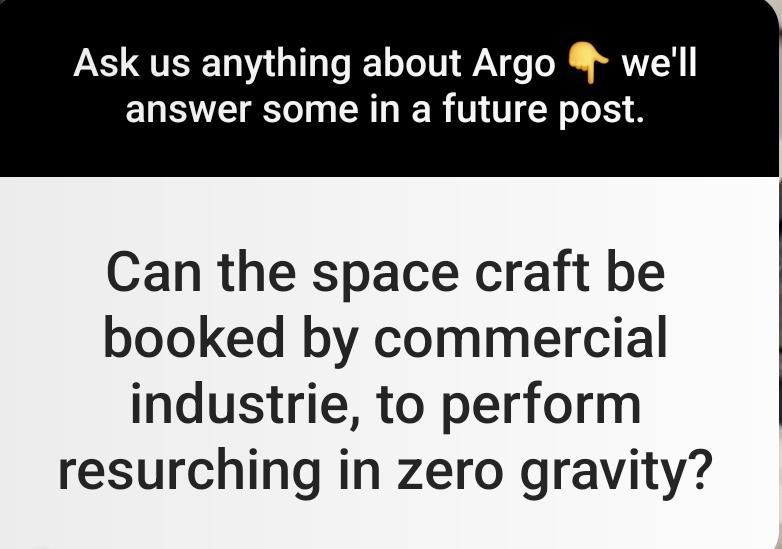
Yes! Argo is strategically oriented towards commercial viability. We warmly welcome collaboration and partnership from diverse commercial sectors and encourage companies to leverage Argo for innovative scientific research and exploration.

In short: Yes. From the start, we envisioned Argo as more than just a cargo delivery system to LEO. Together with our partners, we have created a detailed roadmap on how further capabilities can be achieved in a reasonable time frame. If you’re asking what exactly that roadmap is, well, you’ll just have to wait and see…
Argo’s services start at 150 million EUR per launch.
Our analysis was based on publicly available information and showed that Argo is highly competitive and significantly undercuts the prices offered by competitors. For reference, ATV claimed to be 300 million EUR per launch.

You’ll just have to come along to find out. See you there to discuss Argo, RFA ONE, Redshift and other awesome space things!

Space Cargo Unlimited is committed to developing, delivering and operating the outfitting capabilities of Argo to play the role of commercial services provider for microgravity research in space at a high-value benefit on Earth. Their REV1 vehicle is considered an alternative return solution that will be further investigated during the project in line with the technical feasibility and/or the market needs The core of Argo would remain the same, and another scenario could see REV1 Max added to the front end of the capsule.

Lucky for us, Argo is based on a combination of existing technology through European partnerships. Therefore, we can use a building blocks approach to build the capsule. The Fenix engines will see their first flight on RFA ONE this year. A subscale IAD has already been tested and is planned to gain its flight heritage on the SpaceX Transporter mission in 2025. And the stainless steel tanks and CFRP structures will also be flight-qualified on RFA ONE. We are confident that all critical systems of Argo will reach TRL 6 in 2026 for its first demo mission in 2028.

The beauty of Argo is that parachutes are not needed. The Inflatable Atmospheric Decelerator (IAD) fully covers re-entry and deceleration prior to splash down in the ocean.
Along with questions about the launch vehicle, this question popped up most often. We understand why – you’re curious!
And we want to be transparent. Argo’s journey does not end with cargo delivery to LEO. It is deliberately designed to evolve into a comprehensive exploration and transportation system to push the boundaries of human presence in space.

To answer this, we’ll just say: Have patience.
And we’ll leave this here…
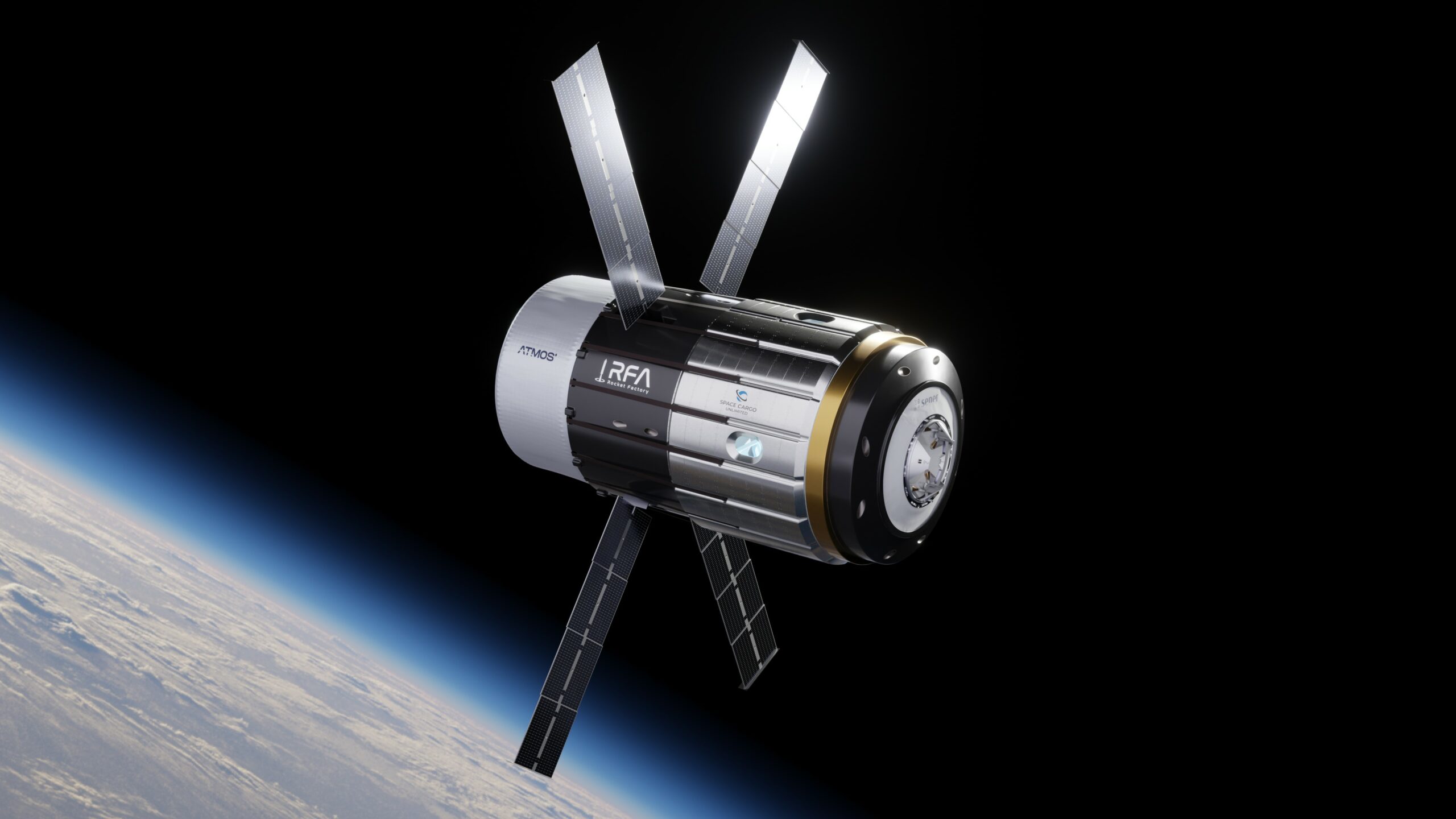
We hope you enjoyed this deep dive into Argo. We certainly enjoyed answering all your questions! If you want to check out more details about Argo, you can see some of our recent social media posts.
Alternatively, you can visit our dedicated Argo webpage at https://rfa.space/argo
Stay up to date with The Preburner blog and all of our latest posts by signing up.
Interested in featuring us?
Copyright 2024 © All rights reserved.
If you’re interested in receiving our press kit, please enter your details below. We’ll review your request and get back to you ASAP.
If you’re interested in receiving access to our Payload Users Guide for our Redshift OTV, please enter your details below.
If you’re interested in receiving access to our Payload Users Guide for our RFA ONE, please enter your details below.
We will get back to you soon.

Necessary cookies are absolutely essential for the website to function properly. This category only includes cookies that ensures basic functionalities and security features of the website. These cookies do not store any personal information.
Any cookies that may not be particularly necessary for the website to function and is used specifically to collect user personal data via analytics, ads, other embedded contents are termed as non-necessary cookies. It is mandatory to procure user consent prior to running these cookies on your website.
Analytical cookies are used to understand how visitors interact with the website. These cookies help provide information on metrics the number of visitors, bounce rate, traffic source, etc.
Performance cookies are used to understand and analyze the key performance indexes of the website which helps in delivering a better user experience for the visitors.
Undefined cookies are those that are being analyzed and have not been classified into a category as yet.